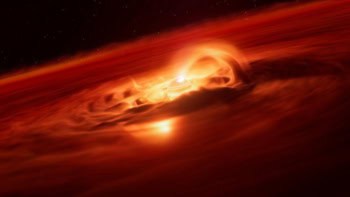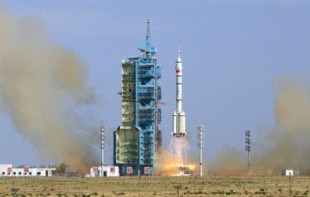Twelve newly discovered moons have brought Saturn's satellite tally to thirty. An international collaboration of astronomers led by Brett Gladman at the Observatoire de la Côte d'Azur in France used a highly sensitive imaging technique to detect the faint moons, which have very irregular orbits (B Gladman et al 2001 Nature 412 163).
Gladman’s team inspected the entire stable portion of space around Saturn in which satellites are able to orbit. This is known as the Hill sphere, and is the region around any planet where its own gravitational forces outweigh the Sun’s tidal forces. The powerful optics based on charge-coupled devices could detect very faint objects of just 23rd magnitude – over a hundred million times dimmer than a bright star. Gladman and co-workers are confident that they have detected all the moons orbiting Saturn that are greater than about four kilometres in diameter.
Satellites of the giant planets in the solar system fall into two categories: ‘regular’ moons with circular orbits in the planet’s plane of rotation, and ‘irregular moons’ with highly elliptical and inclined orbits. Saturn’s new moons join Phoebe – the only previously known irregular satellite orbiting the planet – in the second group.
Different formation processes are thought to have given rise to the two distinct groups of satellites. Regular moons probably formed long ago from the disks of gas and dust circulating around planets. But it is likely that the irregular moons were wandering objects later captured by the gravitational fields of the giant planets.
Gladman and colleagues calculated the orbits of Saturn’s new moons – which range from six to 32 kilometres in diameter – and found that they were sharply inclined to the planet’s plane of rotation. Together with their sizes, this strongly suggests that the satellites are fragments left over from collisions between larger moons, according to the group.
Satellites are visible because they reflect sunlight, and this makes it easier to spot satellites that are orbiting planets closer to the Sun. Gladman and co-workers believe a similar system of irregular satellites could be orbiting Neptune, but speculate that they could be between ten and a hundred times dimmer.
Saturn’s new moons were tracked for six months during 2000 and 2001 from several ground-based observatories, including the European Southern Observatory telescope and the Canada-France-Hawaii telescope.



